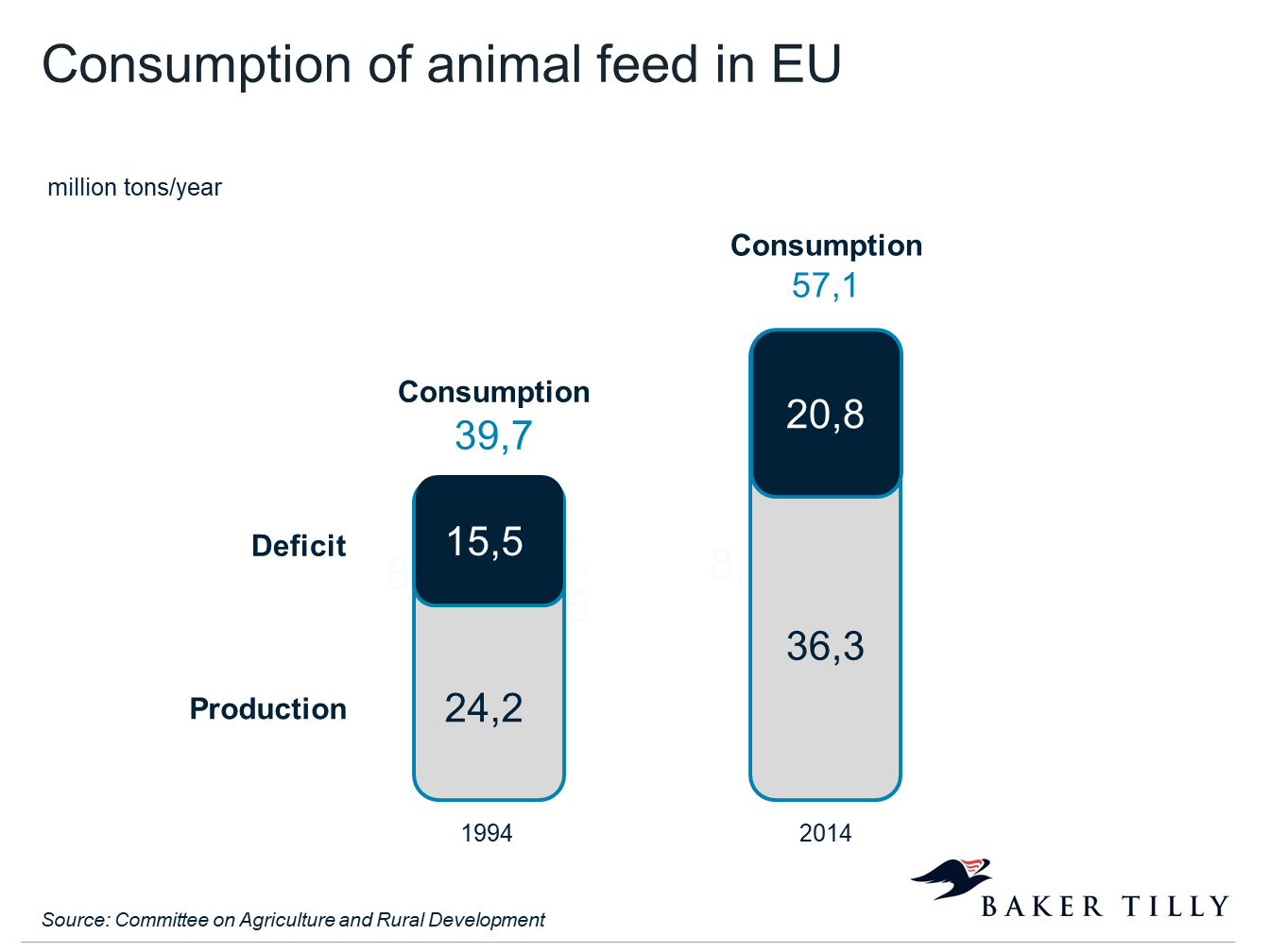European Parliament considered the new European Strategy on Encouraging of Protein and Leguminous Crops Production. Besides general issues related to the support of internal production, the strategy also dwells on the export of soybeans and other protein and leguminous crops.
European production covers only 5% of internal demand for soybeans
Every year 477 million tons of raw materials are used for the production of animal feed in EU countries. 50% of this quantity is ensured by grazing lands, while other 50% is derived from main cultivated crops and import. Besides feed production, EU also consumes additional 45 million tons of protein raw materials per year.
Currently, EU can cover 38% of its needs in animal feed. At the same time, demand for soybeans, which is the third most consumed crop in EU, is covered only for 5% by internal production.

International trade agreements made EU dependent on import of protein and leguminous crops
The reasons for such big deficit and dependence on the import is explained by old international trade agreements, with the USA in particular. Agreements allowed the EU to protect its crops production. Though, the authorization for feeless import of leguminous and oleic crops to EU (GATT and Blair House Agreement) made its production inside the Union unprofitable.
Currently, the EU allocates only 3% of its arable lands for the production of protein and leguminous crops and imports only 70% of animal feed – mainly from Brazil, Argentina, and the USA.
The EU opts for organic farming
The main part of import originates from South America and the USA and majorly consists of GMO crops. For example in the USA, the amount of genetically modified soybeans is around 90% from general production volume. Globally, around 90 million hectares of arable lands are planted with GM soybeans – 82% of the area planted with this crop in the world.
Such type of production is the key factor of changes in land cultivation patterns, deforestation, soil erosion and contamination with pesticides. There are several regulations restricting the GMO cultivation by EU members. The EU strategy on the encouragement of protein and leguminous crops production should decrease the Union’s dependence on GMO import, as it’s impossible to completely eliminate the deficit of protein and leguminous crops, especially of soybeans.
The new agricultural policy is directed towards stimulation of local production and reinforcement of the research sector
The new EU strategy on protein and leguminous crops promotion suggests the update of the Common Agricultural Policy. Cultivation of soy and other beans should become more profitable and competitive. It foresees the development of local and regional networks of protein and leguminous crops production and processing, support the supply of animal feed to livestock farmers as well as adapt the diets of animals to their real needs.
The research will become the basis of these changes. Areas of protein and soybean crops cultivation as well as capacities of their production will be identified. The next step will be an active investment in comprehensive research aimed at making leguminous crops more economically attractive: competitive production and yields’ growth.
China is a threat to the supply of soybeans to EU
Currently, China is the largest global importer of soybeans which majorly gets it from Brazil – the biggest producer and exporter of this crop in the world. One fact requires particular attention, though. China, which consumes over 2/3 of soybeans produced in Brazil, found a way to ensure sustainability of future supplies which can endanger the export of this crop to the EU and other countries. EU independence in soybeans, as well as other protein and oleic crops supplies, can be achieved through close cooperation with EU neighbors and diversification of soybeans import. The key condition – the import should be consistent with social and ecological EU standards. The preference is also given to GMO-free products.


